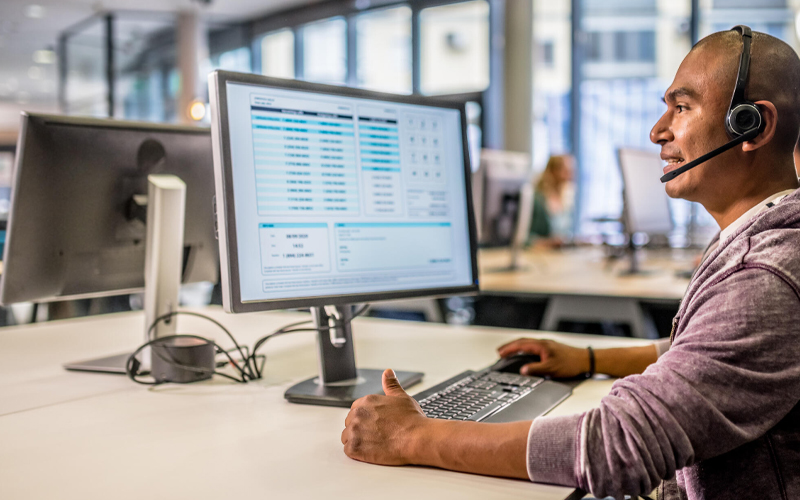The utilities sector has experienced unprecedented changes in the past few years. Utilities was one sector that lacked competition because there were not too many players. However, this has changed in the wake of increasing customer demands. Besides the rising competition, utilities operators have to contend with several other challenges.
Some customer engagement challenges in the utilities sector include:
- Climate change
- Increase in distributed energy resources
- Digital transformation
- Cyber security
- Sustainable energy solutions
- Changing customer expectations
Another trend in the utilities sector that needs attention is the rise in the production of EVs. Utilities need to develop convenient charging infrastructure, establish seamless vehicle-grid integration, and build systems to support medium and heavy-duty vehicles.
While all the above factors have their impacts, the factor that has surfaced as the most challenging is unpredictable customer expectations.
Utilities providers need to build robust systems that engage consumers and provide a great customer experience.
Changing Customer Demands
A few years ago, communication with consumers was unidirectional. The utilities providers generated energy bills based on consumption and sent them to the consumers. There was no channel for communication from the customer side except when complaints were raised. This model worked fine because customers were not very demanding.
However, customer behaviour has undergone a phenomenal transformation in the digital age. The awareness has increased and customers today expect transparency from utilities providers. They want to track their energy usage in real time, expect outage notifications, etc. They demand a two-way communication system where they have a more active role to play in managing their energy usage patterns.
Customers of today want to follow sustainable practices to make a difference. This is another reason that they want to have a say in matters such as buying/selling/leasing power on the grid, installing solar panels, and more.
The challenge for utilities providers is to engage their customers so that they do not lose them to competitors.
The first step towards engaging the users is, identifying their needs and pain points, etc. Utilities operators need information about customer response to new products/features, inputs about both positive and negative consumer interactions, etc. This analysis requires customer data that is scarce in legacy systems. Traditionally the only way to gather information about consumers was through feedback forms or surveys. This provided limited data about the customers. Lack of data makes it difficult for utilities operators to provide products/services tailored to the needs of their users.
Technology to the Rescue!
In the digital era, it is easier to develop two-way communication channels with consumers and build a database that can provide valuable insights.
Today, in addition to phone calls, customer interactions can be built over emails, interactive websites, social media platforms, apps, and more. Data can be extracted from all these interactions to create services and products that reduce efforts, offer them more control over energy management, and reduce their carbon footprint.
Utilities operators need an understanding of how customers interact with different channels to get a holistic view of the customer journey. Technologies like Artificial Intelligence (AI) enable utilities providers to identify the needs of consumers through different stages of their journey.
AI can analyse customer behaviour and identify patterns in energy usage. These insights enable utilities to maintain the grid more efficiently. AI also helps predict outages and respond to sudden changes in usage.
Technology has paved the way for innovations in traditional utilities services like water, gas, power, and telecom. It offers products such as automatic meter readings, advanced metering infrastructure, and smart grid technologies to make it more convenient for users. Technology integrates different systems to facilitate seamless data exchange between various stakeholders.
Smart meters made a foray in the early 2000s. It is now being enhanced with features like faster processing, greater memory, modular communication, etc.
Smart meters also serve as data-gathering devices and provide large volumes of customer data to utilities. AI tools gather and analyse data to provide insights that help build strategies tailored to the needs of consumers. The data collected through different sources also helps utilities to adapt to factors like climate change, outdated infrastructure, and more.
Smart meters and smart grids also help reduce carbon footprints by optimising energy consumption patterns. Consumers have more control over managing their energy usage. They can regulate their usage to make it more sustainable while reducing their energy bills.
Smart metering also eliminates the need for meter readers to travel to individual homes to record meter readings.
Utilities organizations are increasingly using interactive customer service portals. These portals facilitate customer engagement besides enabling customers to manage their accounts. These self-service portals include features like e-billing, energy tracking, energy-saving tips, and more. Customer service portals enhance customer experience and improve customer retention.
In Conclusion
There has been a paradigm shift in customer behaviour in the past few years. Engaging and retaining customers in a competitive marketplace is becoming increasingly difficult for utilities operators. Technological intervention is the need of the hour to make utilities more resilient and agile.
*For organizations on the digital transformation journey, agility is key in responding to a rapidly changing technology and business landscape. Now more than ever, it is crucial to deliver and exceed on organizational expectations with a robust digital mindset backed by innovation. Enabling businesses to sense, learn, respond, and evolve like a living organism, will be imperative for business excellence going forward. A comprehensive, yet modular suite of services is doing exactly that. Equipping organizations with intuitive decision-making automatically at scale, actionable insights based on real-time solutions, anytime/anywhere experience, and in-depth data visibility across functions leading to hyper-productivity, Live Enterprise is building connected organizations that are innovating collaboratively for the future.








